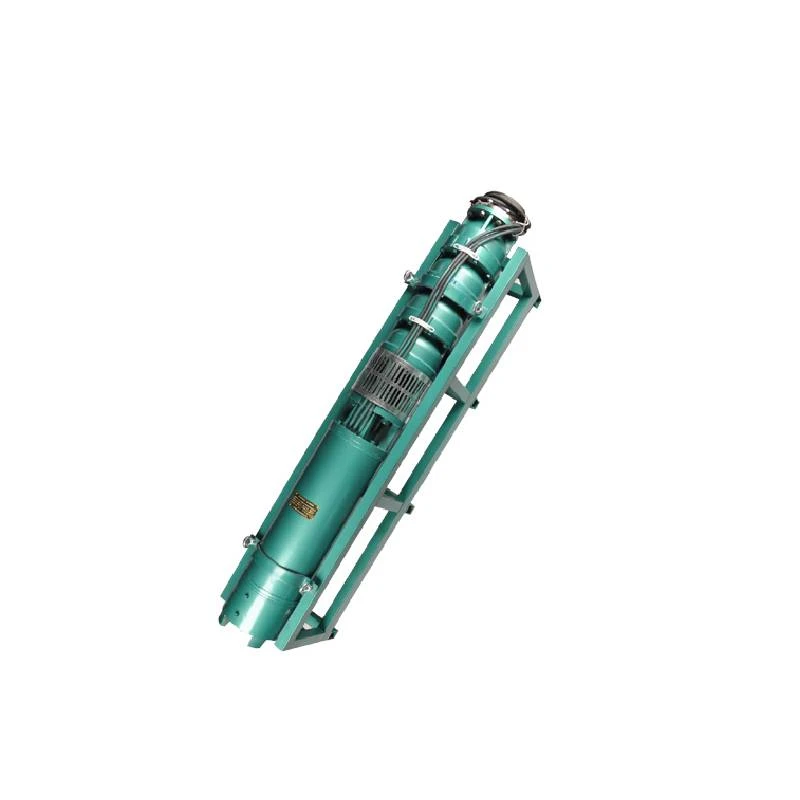Dek . 10, 2024 13:13 Back to list
submersible sump pump
Understanding Submersible Sump Pumps An Essential Tool for Water Management
Submersible sump pumps are an essential component in managing excess water in various environments, particularly in basements and crawl spaces. Unlike traditional sump pumps that sit above the water level, submersible pumps are designed to be submerged in water. This unique design offers several advantages, making them a popular choice among homeowners and professionals alike.
How Submersible Sump Pumps Work
Submersible sump pumps operate using a simple yet effective mechanism. They consist of a motor, a pump body, and an impeller. When water levels rise in a sump pit, the pump is activated, and the motor powers the impeller. As the impeller spins, it creates suction that draws water into the pump. The water is then expelled through a discharge pipe, preventing flooding and water damage.
The submersible nature of these pumps is crucial. By being submerged, they can effectively manage higher volumes of water without the need for additional mechanical support. This design also means they operate more quietly than their pedestal counterparts, making them ideal for residential settings.
Benefits of Using Submersible Sump Pumps
1. Efficient Water Removal Submersible sump pumps are highly efficient at removing water. With a strong motor and a well-designed impeller, they can pump out thousands of gallons per hour, making them suitable for heavy-duty applications such as sewage or stormwater removal.
2. Space-Saving Design Since they are placed underwater, submersible pumps take up minimal space and do not interfere with the aesthetics of your basement or outdoor area. This compact design makes them easier to integrate into existing drainage systems.
3. Enhanced Durability These pumps are designed to withstand harsh conditions. Many submersible models are constructed with corrosion-resistant materials, allowing them to operate effectively in challenging environments, such as those exposed to chemicals or high sediment levels.
4. Automatic Operation Many submersible sump pumps come equipped with float switches that enable automatic operation. This means the pump can turn on and off based on water levels, reducing the need for constant manual monitoring.
submersible sump pump

5. Versatility Submersible sump pumps can be used in various applications, from residential basements to agricultural settings. They are suitable for dewatering tasks, drainage, and even aquaculture.
Considerations When Choosing a Submersible Sump Pump
While submersible sump pumps offer numerous benefits, choosing the right one for your needs is crucial. Here are some factors to consider
- Pump Capacity Look for a pump with a suitable capacity for your specific needs. If you anticipate significant water accumulation, opt for a higher capacity model.
- Power Source Most submersible pumps are electric, but consider a backup power option, such as a battery backup, especially in areas prone to power outages.
- Material and Build Quality Choose a pump made from durable, corrosion-resistant materials that can withstand the conditions in which it will be used.
- Noise Levels While submersible pumps are generally quieter than pedestal pumps, some models operate more silently. Check the specifications if noise is a concern.
Conclusion
Submersible sump pumps are integral to effective water management, especially in areas susceptible to flooding. Their efficiency, durability, and automatic operation make them a worthwhile investment for homeowners and businesses alike. By understanding the functionality and benefits of these pumps, you can make an informed decision that best suits your water management needs. Whether you are protecting your basement from water damage or managing water in agricultural applications, submersible sump pumps are an indispensable tool in maintaining a dry and safe environment.
-
Water Pumps: Solutions for Every Need
NewsJul.30,2025
-
Submersible Well Pumps: Reliable Water Solutions
NewsJul.30,2025
-
Stainless Steel Water Pumps: Quality and Durability
NewsJul.30,2025
-
Powerful Water Pumps: Your Solution for Efficient Water Management
NewsJul.30,2025
-
Oil vs Water Filled Submersible Pumps: Which is Better?
NewsJul.30,2025
-
Deep Well Pumps: Power and Reliability
NewsJul.30,2025
-
 Water Pumps: Solutions for Every NeedWhen it comes to handling dirty water, the dirty water pump is a must-have.Detail
Water Pumps: Solutions for Every NeedWhen it comes to handling dirty water, the dirty water pump is a must-have.Detail -
 Submersible Well Pumps: Reliable Water SolutionsWhen it comes to ensuring a reliable water supply, submersible well pumps are a top choice.Detail
Submersible Well Pumps: Reliable Water SolutionsWhen it comes to ensuring a reliable water supply, submersible well pumps are a top choice.Detail -
 Stainless Steel Water Pumps: Quality and DurabilityWhen it comes to choosing a water pump, the stainless steel water pump price is a crucial factor.Detail
Stainless Steel Water Pumps: Quality and DurabilityWhen it comes to choosing a water pump, the stainless steel water pump price is a crucial factor.Detail
